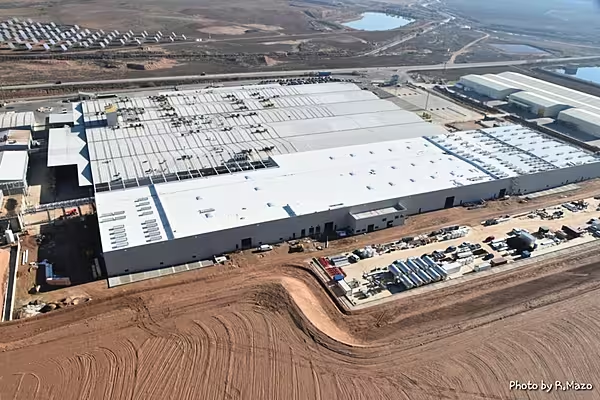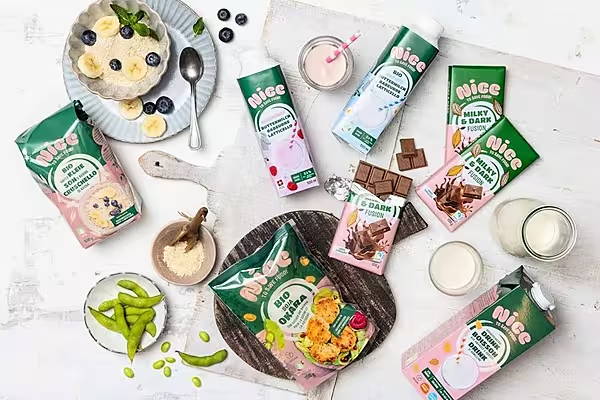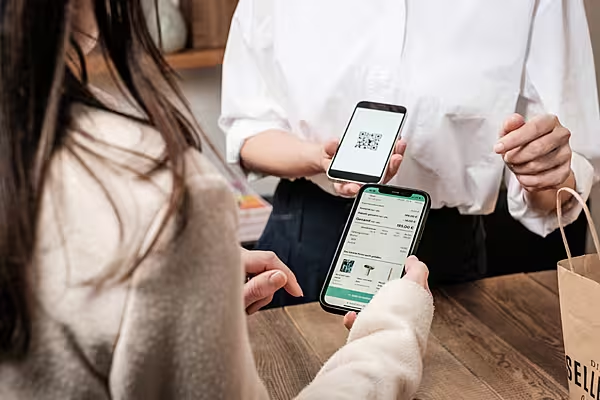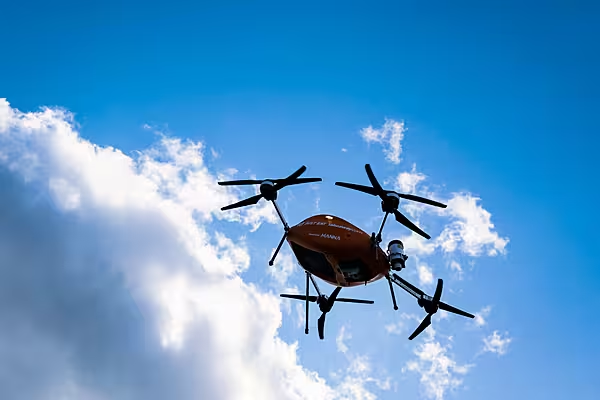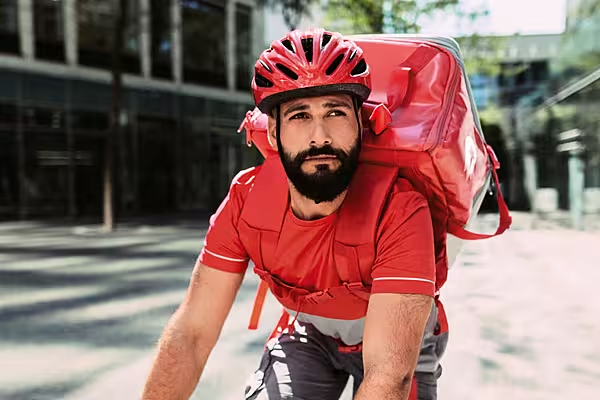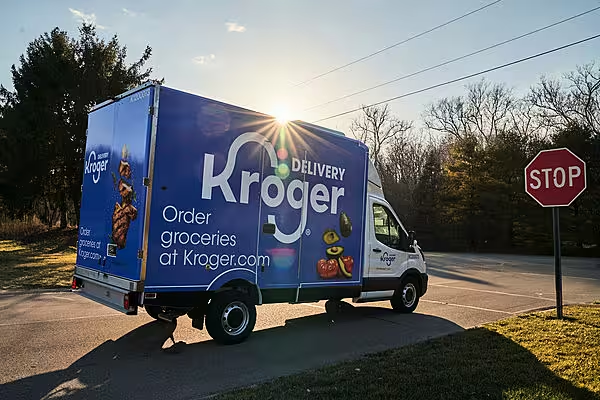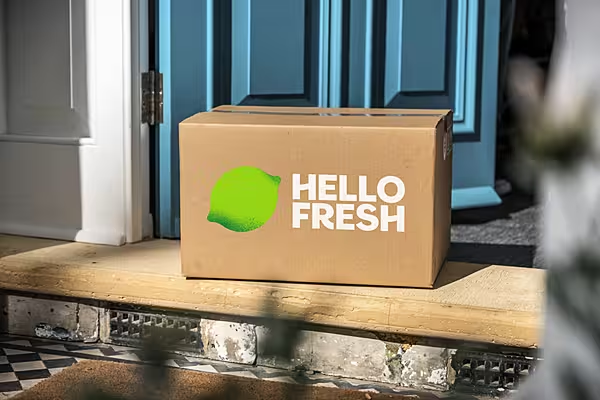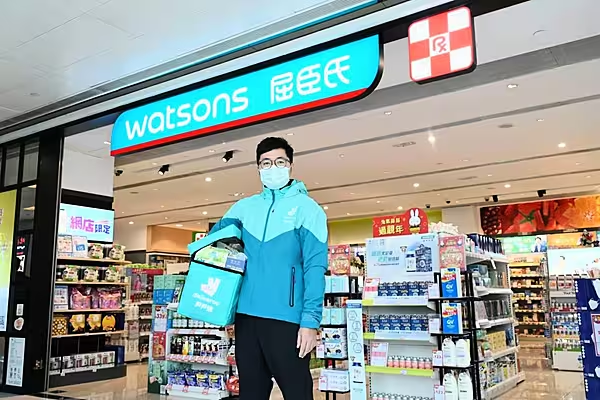The white paper Engaging And Personalised In-Store Experiences Powered By StorevolutionTM, by Diebold Nixdorf, comprises four chapters: Mobility for Agility; Elevating the Store Experience; Connected Associates; and Building the Next Generation of Stores.
To download the full report, visit retailexperience.store.
Chapter 1: Mobility For Agility
Prior to 2020, it was arguable that few, if any, industries underwent as much change in the previous decade as retail. And then the pandemic arrived. The speed of change hit unimagined heights, with social distancing, contactless payments, and immediate increases to delivery slots and Click & Collect capacity just some of the measures retailers took, overnight, to adjust to 'the new normal.'
COVID-19 will have a lasting effect on shopper behaviour. For example, much greater demand for Buy Online Pick up In Store (BOPIS) services requires the relationship between e-commerce and physical stores to change significantly. Shoppers are also prioritising local, ethical, sustainable, and, wellness products more than they were before. As a consequence, stores need to increase the variety of SKUs they hold.
Furthermore, shoppers are gravitating towards self-service solutions, contactless payments and checkout experiences due to a mixture of speed, convenience, and the assurance of social distancing. And, as they are more familiar with the highly-targeted and appealing promotions presented by brands online, consumers increasingly expect stores to also offer smart and personalised promotions that reflect their spending habits and preferences across all channels.
With this in mind, Diebold Nixdorf believes that the technology platforms that underpin retail must become more versatile to support the ongoing innovation needed to quickly adjust to changing consumer sentiment. Indeed, Forrester Research urges leaders to shift focus toward adaptability including, 'The ability to understand and anticipate market dynamics – and adapt and rapidly exploit opportunities big and small as soon as they arise.'
Mark Thomson, Retail Industry Director, EMEA, Zebra Technologies, said, "We're shifting from a retail-led environment to a consumer-led environment. Customers are in charge of how they shop, where they shop, and how they get their goods. This means stores are part of the overall service picture and not the be all and end all.
"We see a need to reset engagement with customers, and a dedicated mobile strategy is essential to this; mobile technology is nimble and helps create a more fluid environment to maintain the high cadence of service innovation that shoppers are used to online."
In response to this priority, Diebold Nixdorf has created Storevolution – a vision for today and for the future of retail. It's designed to better combine online and offline channels and to create genuinely frictionless experiences for shoppers.
Storevolution is built on a comprehensive suite of technologies that enable retailers to operate with greater agility. An essential component of the solution is mobile technology. As will be explained in this paper, mobile solutions offer significant benefits across three key areas:
- Elevating the store experience: Mobile technology allows people to shop 'their way,' whatever their motivation – whether they've popped in to pick up a few items, or they have more time to spend shopping and are open to receiving dynamic and personalised offers.
- Connected associates: 73% of store associates say they'd be more effective if equipped with mobile technology. Mobile devices help teams collaborate more effectively. They also help associates create a truly service-focused environment. Associates have the knowledge and apps in hand to work across all departments and efficiently manage a wide range of tasks, from inventory to repricing. They can also better take care of customers, from locating them in-store and processing a payment to bust queues, to checking stock, arranging a home delivery, and much more.
- Optimising operations: The pace of change in the retail market demands the full digitisation of the store and new approaches to technology. To ease this process, the latest mobile solutions are based on open platforms and APIs to make it much easier to create, test, and deploy compelling services. Also, in common with other industries, the concept of 'Retail-as-a-Service' is gathering momentum. Section 2 of this paper will look at Diebold Nixdorf's Storevolution Advisory Services and how its virtual modelling tools can help you validate technology more quickly, while section 4 will look at how its experienced Managed Services team can get you to create value faster, while freeing your business to focus on what it does best.
As society emerges from its enforced separation, there's an opportunity to capitalise on the affection people have for shopping – 87% say that visiting shops will be as important to them as it was prior to the pandemic. To fully capitalise on this affinity, there's a need to continually curate engaging in-store experiences.
In fact, the momentum, bravery, and spirit in which retail responded to the pandemic must be maintained, with the goal to create store visits that are fresh, frictionless, and – critically – always changing.
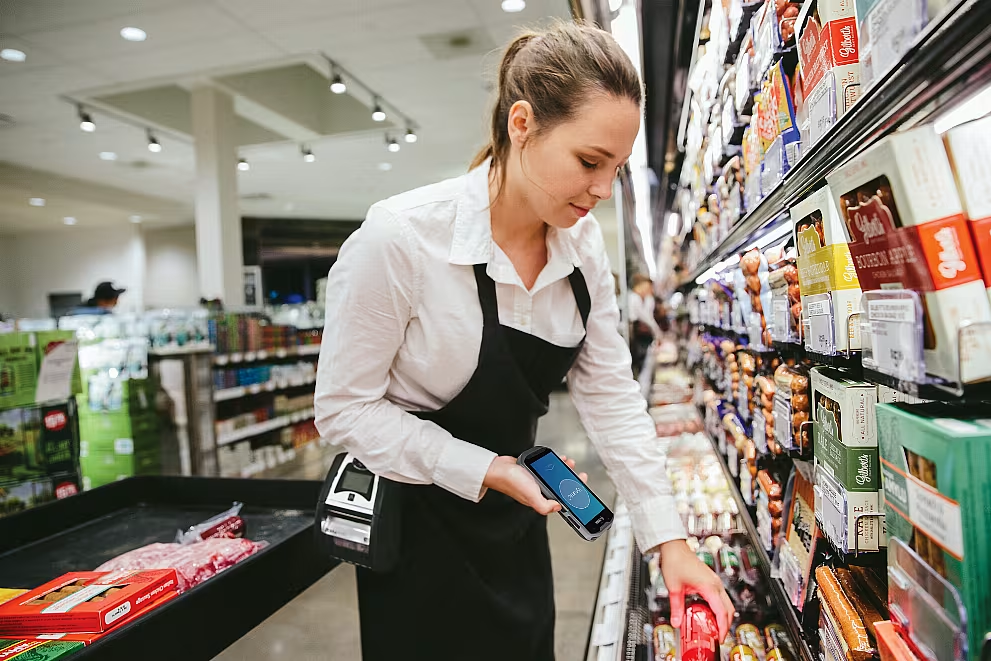
Chapter 2: Elevating The Store Experience
The online shopping experience, which is increasingly personalised and precisely targeted with useful offers, has created the expectation among shoppers of a similar level of service in the real world. To achieve this, Diebold Nixdorf sees the need to identify customers before they come to the store, to understand and personalise their visit, and to offer a range of frictionless checkout options.
IDENTIFYING SHOPPERS
Increasingly, shoppers' journeys start outside the store and, either through a dedicated app or website interaction, retailers can gain a view of each shopper's activity and plans.
Shopper's Journeys Start Well Before They Visit Stores:
- 81% usually create a shopping list
- 78% check stock availability
- 37% are willing to share their shopping list with retailers
Many shoppers, for example, are willing to share their shopping list prior to visiting a store and, by identifying them as they enter (perhaps via their mobile device or a scan of their loyalty card), a personalised journey can be dynamically prepared for them.

Growing Transaction Sizes by 6–10%
Philippe Dauphin, Vice President Retail, Diebold Nixdorf, said, "Thinking about journeys is important: short journeys are all about speed and ease. These shoppers gravitate toward self-service. On longer shops, people are more emotionally invested and interested in innovative services.
"But whatever channel shoppers use, it should draw and share transactions from common data sources, allowing retailers to build a complete omnichannel picture of each customer and better present personalised offers to them as a result. When we change front-end configurations by adding more fluid checkout options, we typically expect to see a growth in transactions of between 6–10%. We also see loyalty and repeat visits increase when the checkout experience is seen to be quick and easy."
UNDERSTANDING SHOPPER JOURNEYS
Journeys typically fall into two categories:
Short journeys: Consumers have less time and more to do. They're shopping on their lunch breaks or on their way home from work. They're picking up a few items, in 15 minutes or less, and they want to scan and go quickly. For the short journey, time is critical and, for these customers, self-checkouts (SCOs) are increasingly popular:
- 75% of shoppers say they want to get in and out of stores as quickly as possible
- In the post-COVID-19 world, 54% are concerned that there are not enough SCOs in-store
- 52% say SCOs are their preferred checkout method
Long journeys: A customer who's busy during the week, and pops into the store for a few items, may well come back to the same store over the weekend. They'll have more time and are likely to interact with more touchpoints and more devices.
For example, with Scan & Go, when a customer scans their loyalty card (and provided they have given necessary permissions), they can be offered a range of personalised services from the shopping device, such as Zebra's PS20. These include:
- An interactive guide to where items on their shopping list are located
- Discounts for recommended items that go well with products on their shopping list
- Offers that reflect their tastes and preferences, or what they searched for online that day

CHECKOUT
Over the next five years, the checkout will look different. It will need less space and be more flexible, with a mix of SCOs, options for Scan & Go and Self Scanning customers to check out directly from the store device, and the freedom to make payments on an SCO, a dedicated POS lane, or anywhere via a Mobile POS (POS).
The combination of SCO and Self Scanning offers consumers the choice to shop with convenience according to the size of their basket, using smartphones where they have one to three items; SCOs for up 15 items; and self-scanning solutions for baskets above 15 items.
Versatile payment solutions, such as SCOs, are capable of offering all of the services of fixed checkouts so that customers on short journeys can still acquire or use loyalty points. The SCO interface can also be changed for each shopper: for example, only presenting a card option if that's the customer's preferred payment method. Retailers increasingly see the value in SCOs:
- 87% agree self- checkout improves the shopping experience
- 81% report they already see a return on their investment in self-checkout technology
Space saved can be diverted to new services: for example, Click & Collect for larger shops or pick-up lockers for small and ad hoc orders – perhaps an office worker ordering lunch and popping in to pick it up.
Customer Insight: Bünting, Germany
Bünting is using Diebold Nixdorf's self-scanning solutions and Zebra's PS20 personal shopping device to accelerate checkout and increase store throughput. Built around open APIs for simple integration with the existing technology environment, the solution is popular with customers and is allowing staff to spend more time enhancing the store experience and less time overseeing checkout lanes.
COMPLETE SOLUTIONS TO ELEVATE THE STORE EXPERIENCE
Diebold Nixdorf and Zebra together offer all the software and hardware needed to enable agile and engaging in-store experiences, including SCOs, Scan & Go, and Mobile Point of Sale services. Diebold Nixdorf's Vynamic™ Software suite provides everything you need to manage powerful engagements with customers.
Key peculiarities include:
- Taking payments: Payments can be taken from any touchpoint (e.g. SCOs, Mobile Point of Sale, wearable devices, and more) while providing a unified experience across them
- Personalising offers: A cloud-based loyalty solution provides a single view of all customer data to enable offers to be tailored on the fly through any checkout medium
- Optimising operations: A highly secure, web-based dashboard gives your operations team a complete view and control over all systems, processes, data and inventory levels
Accelerate Your Time To Market For New Services
The front-end of stores is more complex. Diebold Nixdorf's Storevolution Advisory Services team is here to help de-risk and accelerate the process of introducing new solutions. It combines your real-world transaction data with its knowledge of how solutions like SCOs perform to create highly accurate models that are used to recommend the right mix of checkout points to enhance the customer experience while reducing operational costs.
Configurations are changed easily to see what the outcome may be.
Proof-of-concepts typically take six to nine months or so. But with the Advisory Service, recommendations can be made in a few days with no need to physically deploy or invest in technology. Once recommendations are signed off, the pilot phase can take place in-store, and this is usually completed in nine weeks.
Matt Redwood, Director of Advanced Self-service Solutions, Diebold Nixdorf, said, "Once new systems are in place, we encourage retailers to continue to use the modelling tool to update store data such as the typology of consumers, frequency of visits, basket size, payment methods, and more, to see if changes need to be made.
"This ensures that the front-end configuration keeps pace with the store's trading profile, with the goal of incremental gains in service, throughput, and transaction sizes."
Engaging And Scan & Go Services
Vynamic™ Personal Shopper and the PS20
Diebold Nixdorf's personal shopping solutions can be run over Zebra's powerful PS20, which is used in over 4,500 stores worldwide. It provides an eye-catching installation as shoppers come into stores and a familiar Android user experience.
It enables forgiving scanning of all types of codes, and is designed to work day-in, day-out with intense usage. It's ready for the future, too, with voice recognition allowing you to connect shoppers with colleagues or use digital assistants to help them shop. The PS20 also offers Visible Light Communication (VLC) to fuel machine learning algorithms that give you a better understanding of shoppers' movements in-store.
Process Payments Anywhere with Vynamic™ Retail Software and the TC52 Enterprise Mobile Computer
The all-touch, Android-driven TC52 includes a fast and accurate scanner, powerful processor, high-quality audio, and a rugged build to survive the knocks and drops associated with busy shop floors. With the addition of an attractive mobile payment sled, you can easily process card payments through the terminal. It also provides all the same services customers are used to at the fixed checkout, such as acquiring and using loyalty points, saving on multi-buy offers, and more. The TC52 accessory options also include attractive fittings to fix your device to payment desks.
The overall impact of embedding mobility and digital solutions deeper into stores will be to create a more fluid, personalised, and frictionless service for customers. And, when supplied to your associates, mobile technology further improves the customer experience by helping teams power through tasks and spend more time with shoppers.
Chapter 3: Connected Associates
The business case for providing each team member with a mobile device is strong. Indeed, simply moving to a single multifunction mobile computer will achieve significant cost savings in device maintenance and management. But there are more compelling reasons to digitise operations – especially when 51% of shoppers say they are better connected than associates:
- Empowering associates to assist shoppers: 85% of retail executives say that shoppers have a better experience when associates use mobile devices, and 61% of associates view their employer more favourably for providing them with mobile devices. They also say they're better able to assist customers (66%) and save them time (44%) when using mobile devices.
- Improving inventory: 76% of retailers say maintaining an accurate stock count is a key challenge, while out-of-stocks are the number one reason (42%) why shoppers exit. Mobile devices that provide associates with integrated scanners and inventory applications improve stock visibility and accuracy.
OPTIMISING THE STORE EXPERIENCE FOR ASSOCIATES AND CUSTOMERS
Diebold Nixdorf and Zebra can provide everything you need to help associates be more productive and provide a better service, including powerful software, a wide range of mobile devices and managed mobility services.
Highlights include:
- Inventory checking
- Accelerating ops' tasks such as price markdowns
- Helping associates upsell items when with customers
- Taking payments anywhere to bust queues
- Optimising merchandising by providing detailed instructions and how-to videos
- Managing Click & Collect picking and fulfilment
- Overseeing returns
- Running SCOs more effectively (e.g., remotely clear exceptions such as age verification)
- Helping teams move with confidence between departments
- Enabling real-time communication with voice and messaging on a unified platform
Zebra provides a wide range of enterprise-grade tablets and mobile computers that are designed for retail to run these applications for you.
Mark Thomson, Retail Industry Director, EMEA, Zebra Technologies, stated, "We're seeing retailers using a single multifunction device that's given to all associates for managing a wide range of tasks. We typically see several percentage points' productivity improvement when moving to a 'device for all' strategy, and this can be increased further when moving all paper-based store processes onto a single mobile platform.
"The cost of each device is a fraction compared to the overall employee cost, and this is far outweighed by the bottom-line impact when every team member is more efficient."
CONNECTIVITY MEETS PRODUCTIVITY
Zebra's newest handheld computer is the EC50 (Wi-Fi only) and EC51 (with wide-area connectivity). Designed to be individually assigned and sleek and attractive, users get the smartphone look and feel they want in a device created for business. It provides a fast and intuitive user experience when running the Vynamic Software suite, and has all the features you need to help associates be more productive.
The EC50 will also lower your total ownership costs – it will cost less than half of a comparable consumer product over a typical life cycle. The EC50 comes with Zebra's Workforce Connect solution to equip associates with a powerful presence and voice and data messaging tool that supports one-to-one and group comms'.
It helps you to:
- Optimise productivity: Run stores more effectively so your staff can be fully briefed in the right place, at the right time; reduce travel time by connecting your workforce to the location and availability of inventory; and enable teams to power through tasks.
- Build smarter operations: Eliminate the need for multiple devices; speed up team responses; reduce losses by enabling teams to discreetly inform security of any issues; increase team flexibility; and boost morale by unifying and connecting colleagues across multiple stores.
- Elevate the experience: Enable associates to make smarter decisions and be more efficient by using Push-to-Talk 'walkie-talkie style' voice and messaging on every mobile device. And, by deepening staff product knowledge and supporting immediate associate collaboration, you can provide faster answers to in-store customer queries and a better experience all round.
As we've progressed through this paper, we've touched on the need for agile systems, fully integrated retail channels, and digital stores that are essential to curate a personalised and holistic experience for shoppers. Of course, all of that requires a degree of investment. But this doesn't have to be the onerous, or expensive task that it once was.

Chapter 4: Building The Next Generation Of Stores
The next generation of stores will need to be built around open technologies to better combine online and offline (O2O) experiences. To achieve this, it will be important to digitalise consumer and staff journeys and create O2O baskets without any boundaries by centralising and sharing the same business logic for key domains, including products, prices, and promotions.
Traditionally, projects on this scale would have been challenging. But things are changing, fast. Diebold Nixdorf is pioneering the concept of 'open APIs', using flexible systems and APIs that make it much easier to do the plumbing work required to offer a unified experience for customers across channels.
With mobile devices becoming mission critical when it comes to creating engaging customer and staff journeys, Diebold Nixdorf's Managed Services team is here to help run them to ensure optimum performance. This frees up always-on store staff to focus on what they do best: ensuring outstanding customer experiences which stay in mind instead of being engaged with time-consuming IT tasks. It also builds the trust of your team in using technology.
Customer Insight: Co-op UK
The Co-op's UK EASY self-checkout units are managed by Diebold Nixdorf's DN AllConnect ServicesSM team. It's resolving 80% of service tickets remotely while an uptime of self-service and PoS systems is running at 99%. David Robertson, retail IT director at Co-op, says, "Diebold Nixdorf is a long-term, strategic partner. Through our close working and collaborative approach, we have been able to consistently provide our customers with a fast and efficient checkout experience – helping to keep our communities fed quickly, easily, and safely."
Leyla Feghhi, Director Managed Services, Diebold Nixdorf, said, "We can manage devices remotely to reduce downtime and improve performance. This means staff can rely on their device to work faultlessly and provide a great service to customers.
"As we emphasise proactive management of units, we also reduce the total cost of ownership of devices, while providing real-time data and insights to continue to improve performance and reduce issues like loss or theft. Meanwhile, live dashboards provide the perfect overview of usage to understand if peak-time re-allocation of devices is necessary."
Olivier Faugere, Head of Storevolution Partners, said, "We are committed to an open platform approach, developing APIs that are ever smarter and more versatile. This ensures our solutions can easily interface with those from other vendors.
"It also makes it easier to overlay new services onto legacy architecture with the goal of reducing deployment costs when rolling out new technology such as Scan & Go or SCOs."

Open APIs: Promoting An 'Open Approach' To Systems Architecture
To date, retailers have created point-to-point interfaces between a growing number of touch points and their legacy enterprise applications. This approach is not scalable at a time when technology is changing so fast, and it's hard to predict what the next touchpoint will be.
With this in mind, Diebold Nixdorf is urging the industry to back an open API architecture. This is a strategy followed by Amazon, eBay, and Netflix, and it makes it much easier to integrate online and offline worlds, share business logic on the same platform, easily connect anything (e.g., sensors, touch points, or apps) and adapt.
Diebold Nixdorf and Zebra can help you deploy your systems more quickly and with less risk. By putting your shoppers in control of how they interact with you and offering them convenient and personalised experiences, you can avail of opportunities to increase loyalty, drive-up throughput, and grow basket sizes.
For more on how, together, Diebold Nixdorf and Zebra can help you build engaging and frictionless store experiences, please visit: www.retailexperience.store.
If you prefer to speak to Diebold Nixdorf, please contact retail@dieboldnixdorf.com, and the company will be in touch as soon as possible.
© 2021 European Supermarket Magazine – your source for the latest Technology news. Sponsored post. Click subscribe to sign up to ESM: The European Supermarket Magazine.

